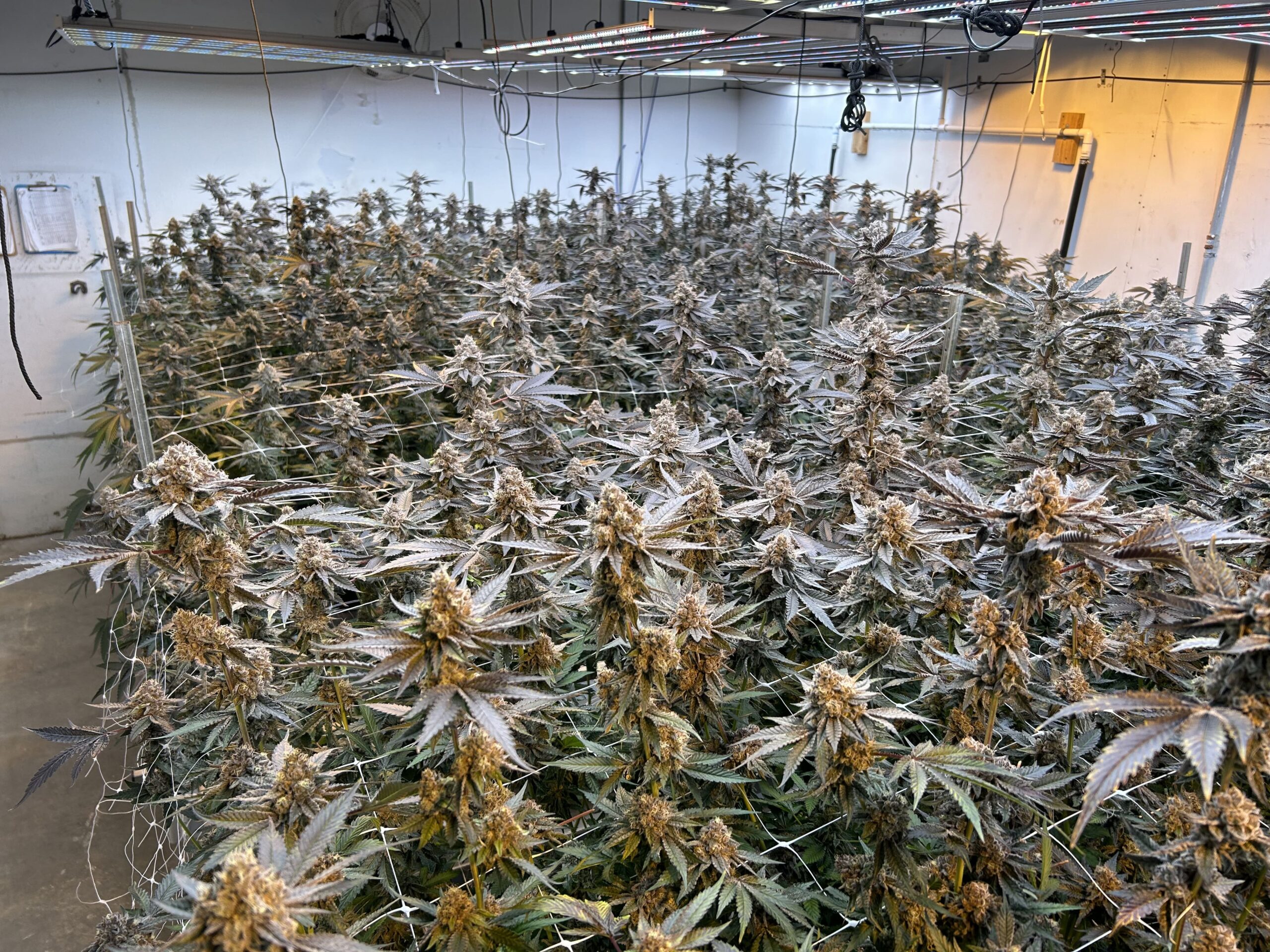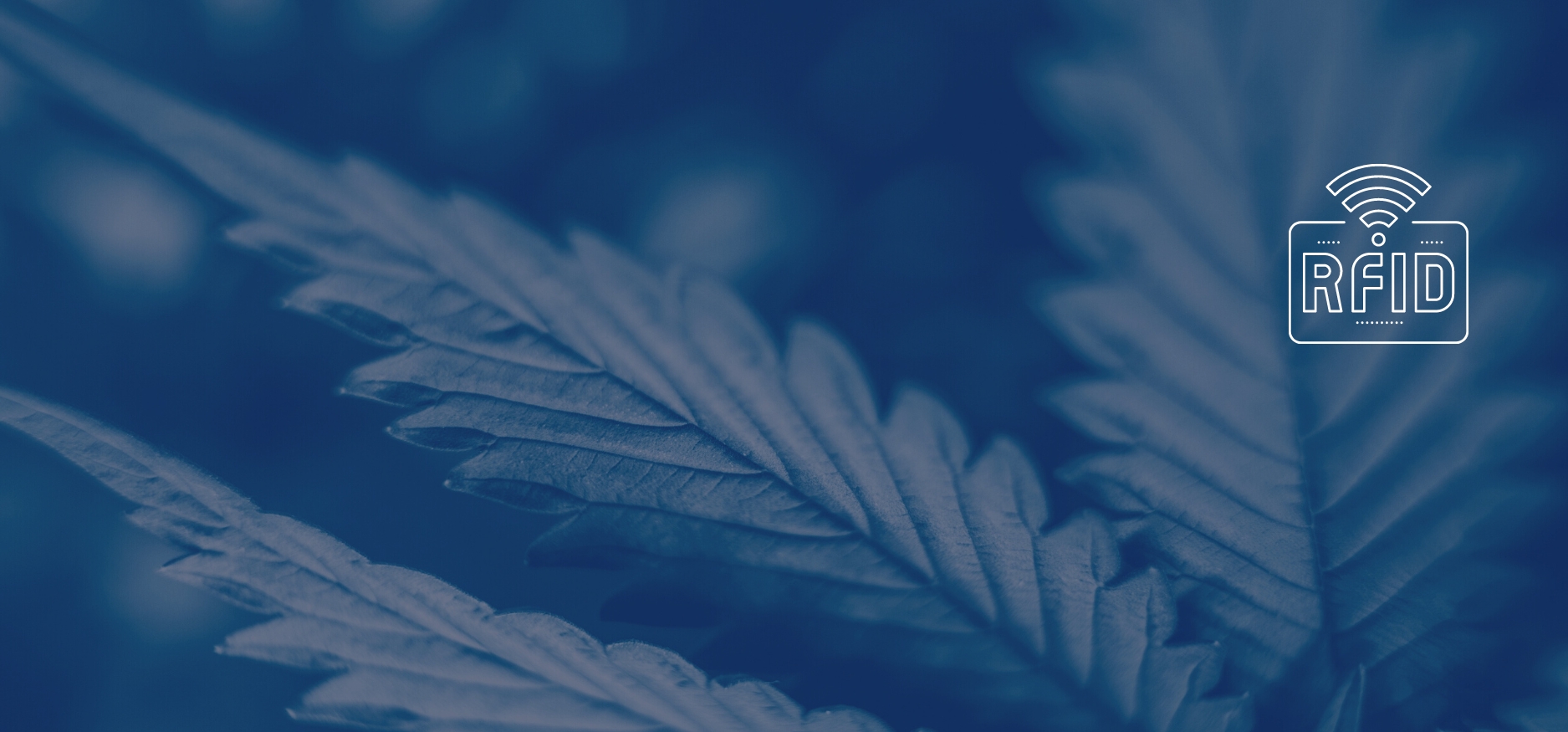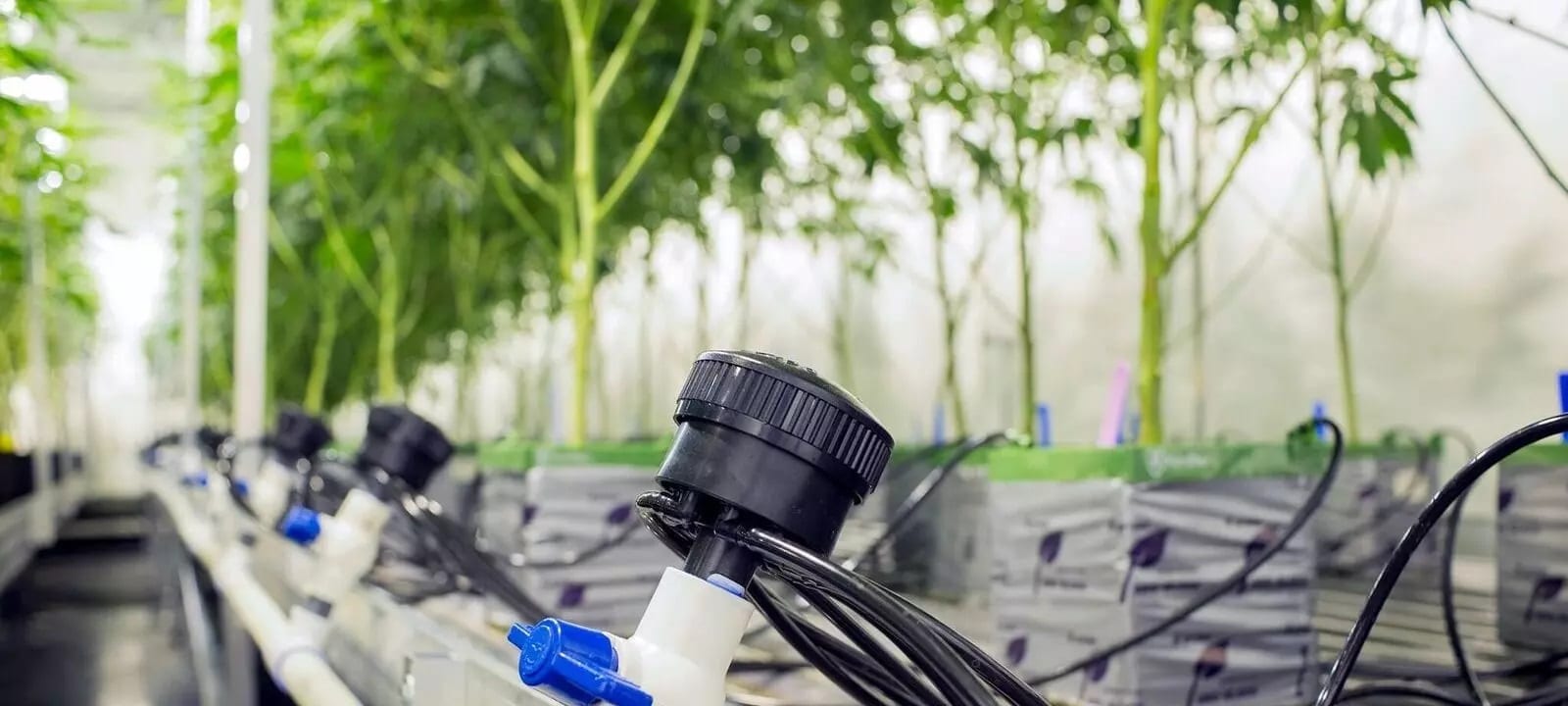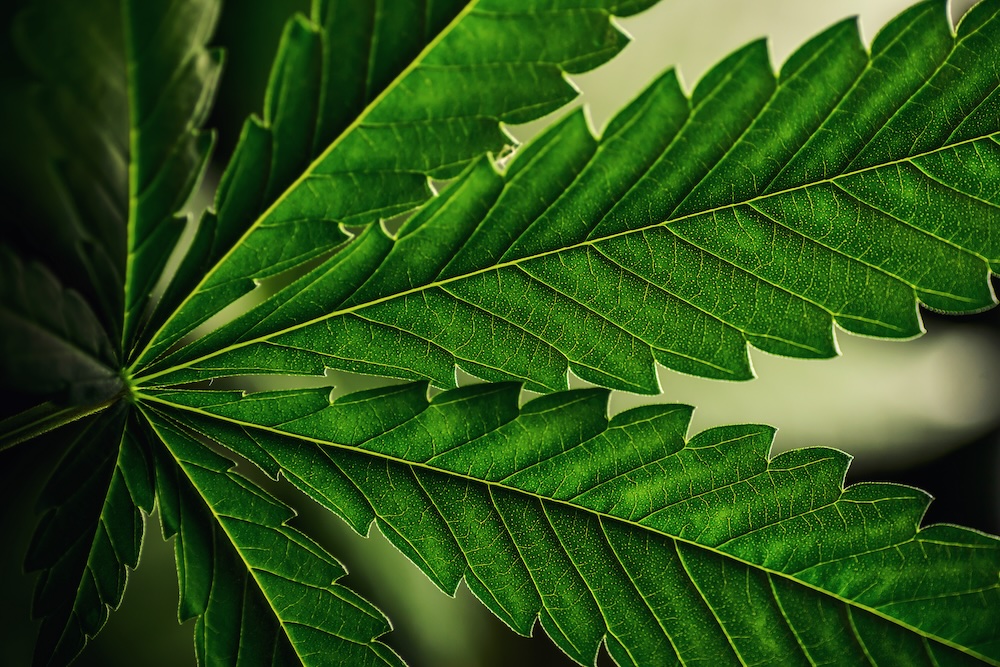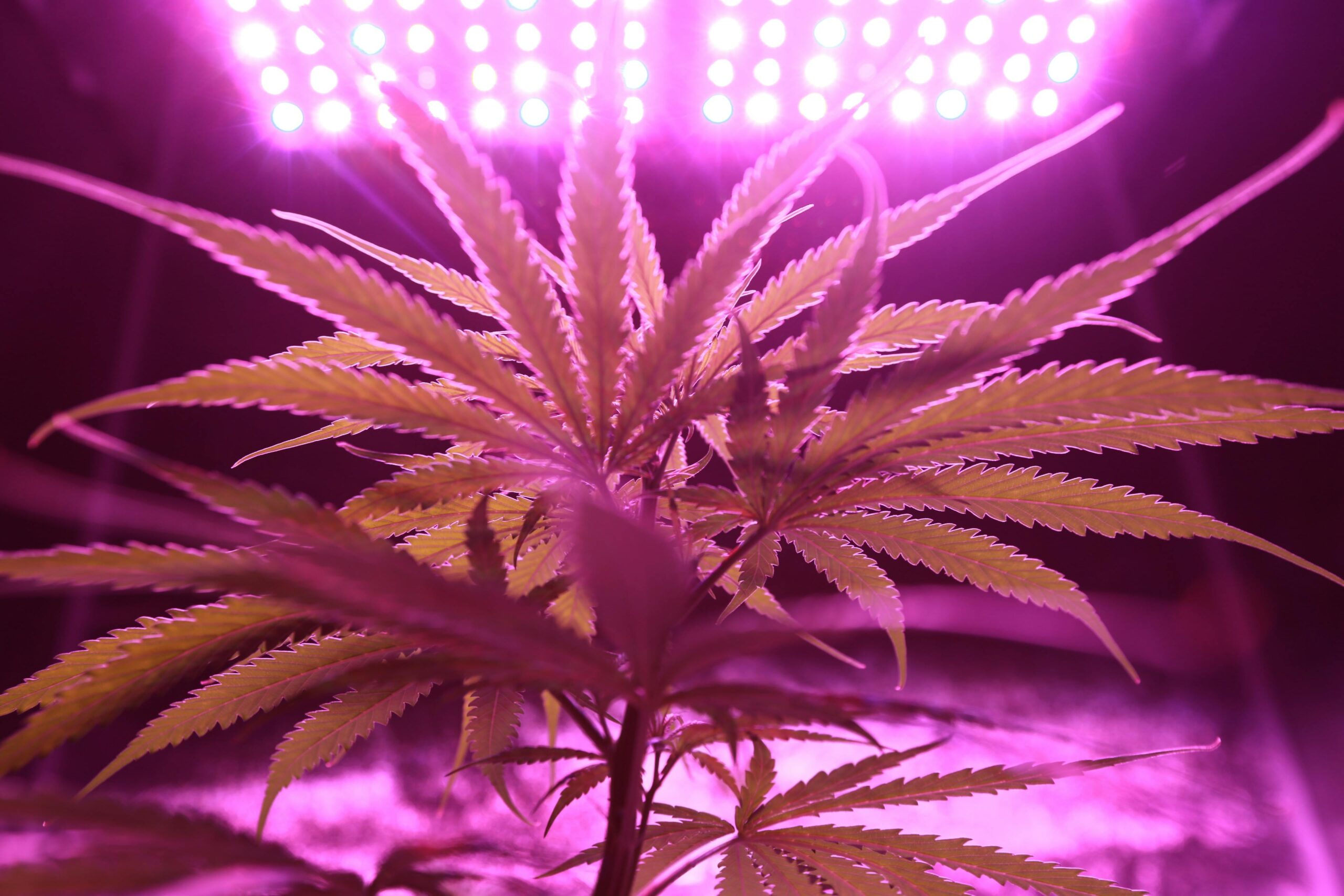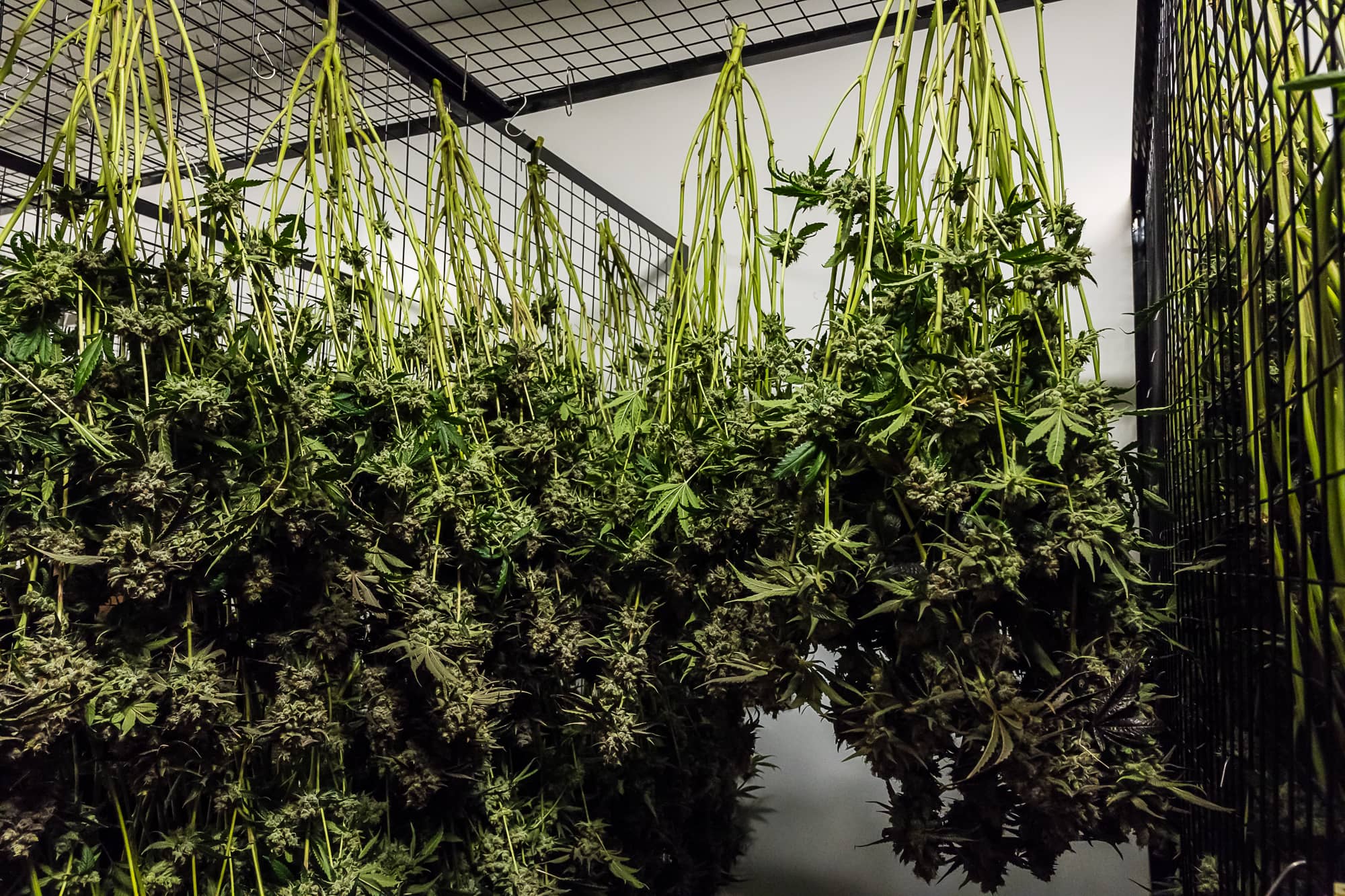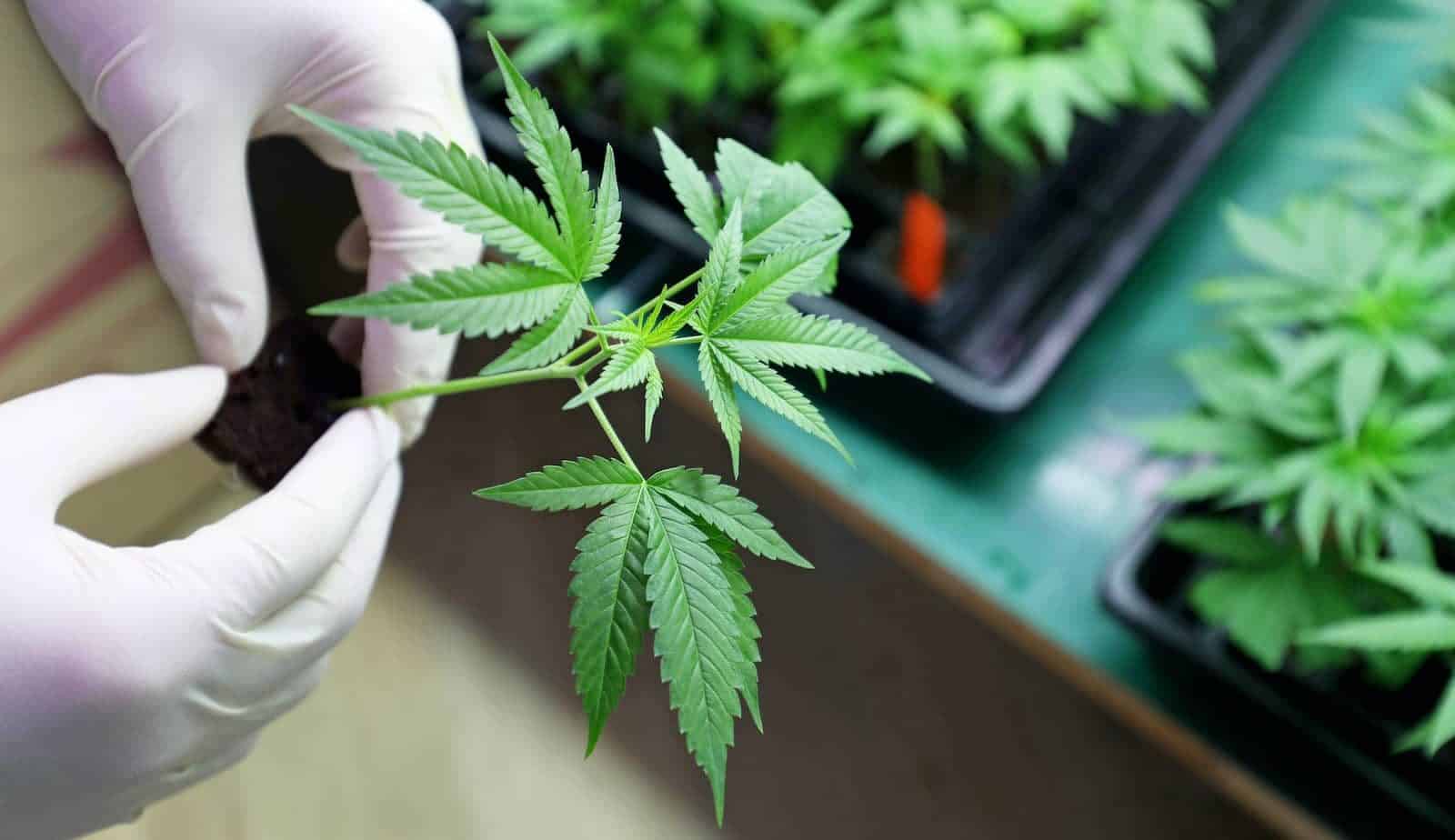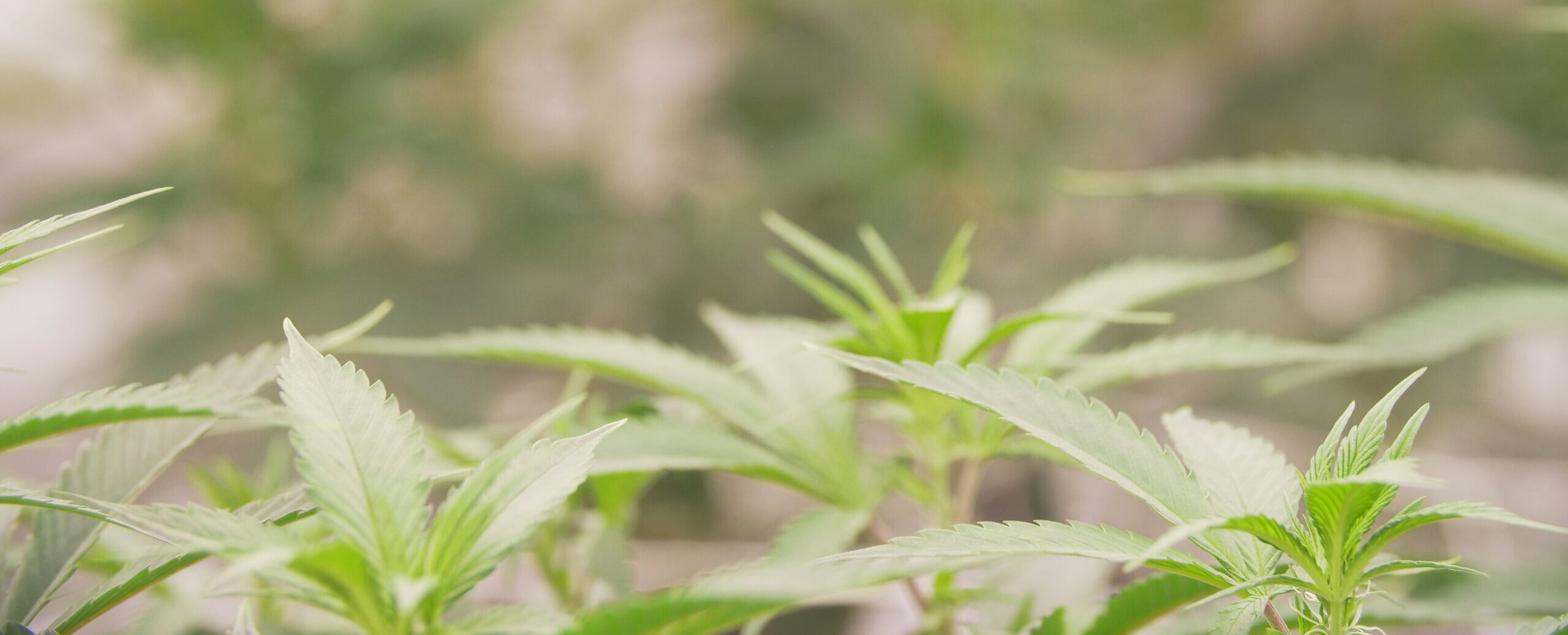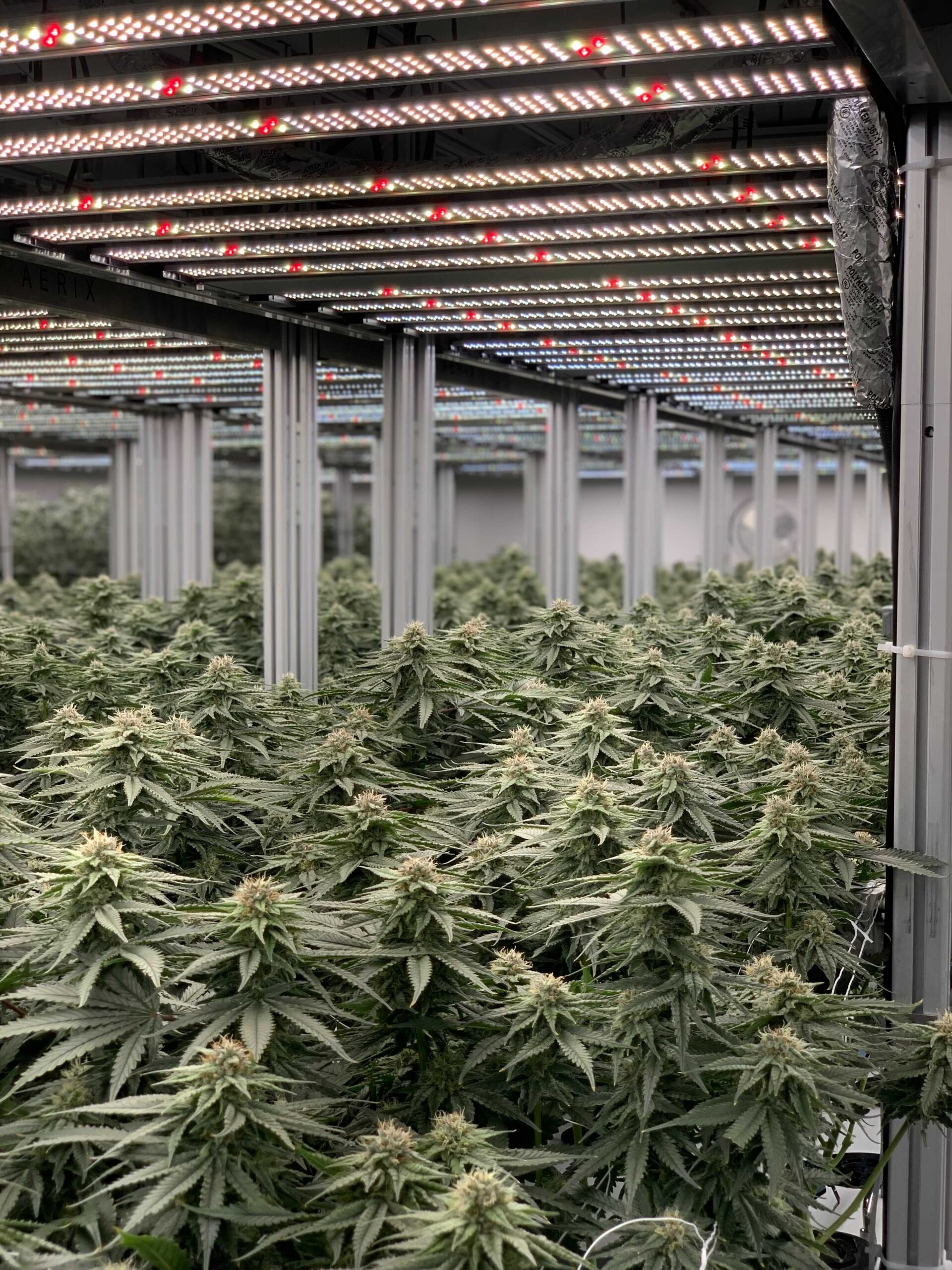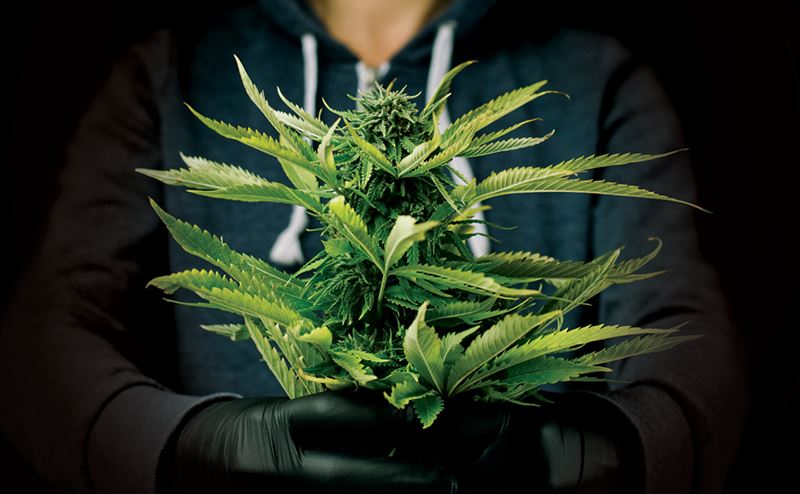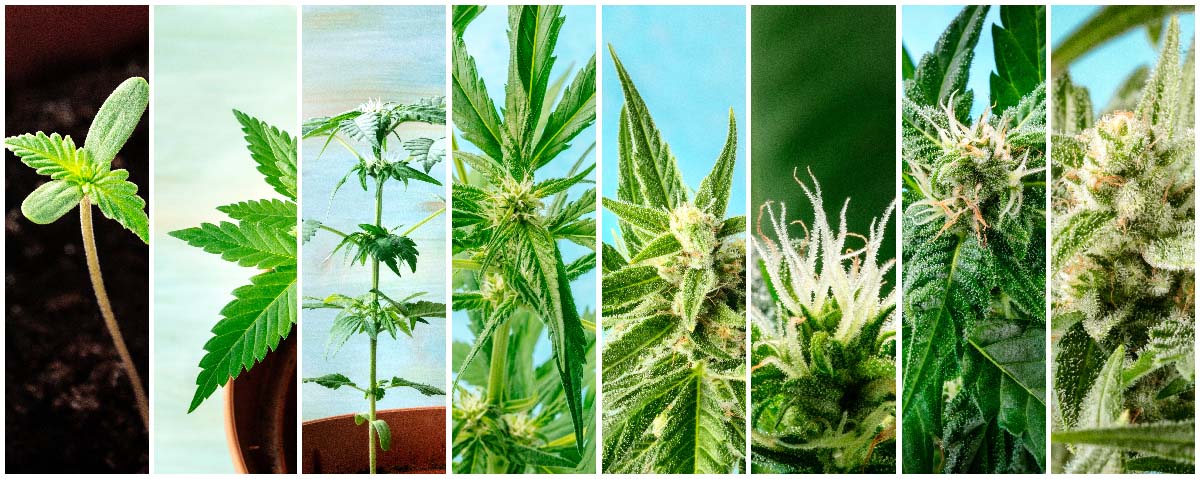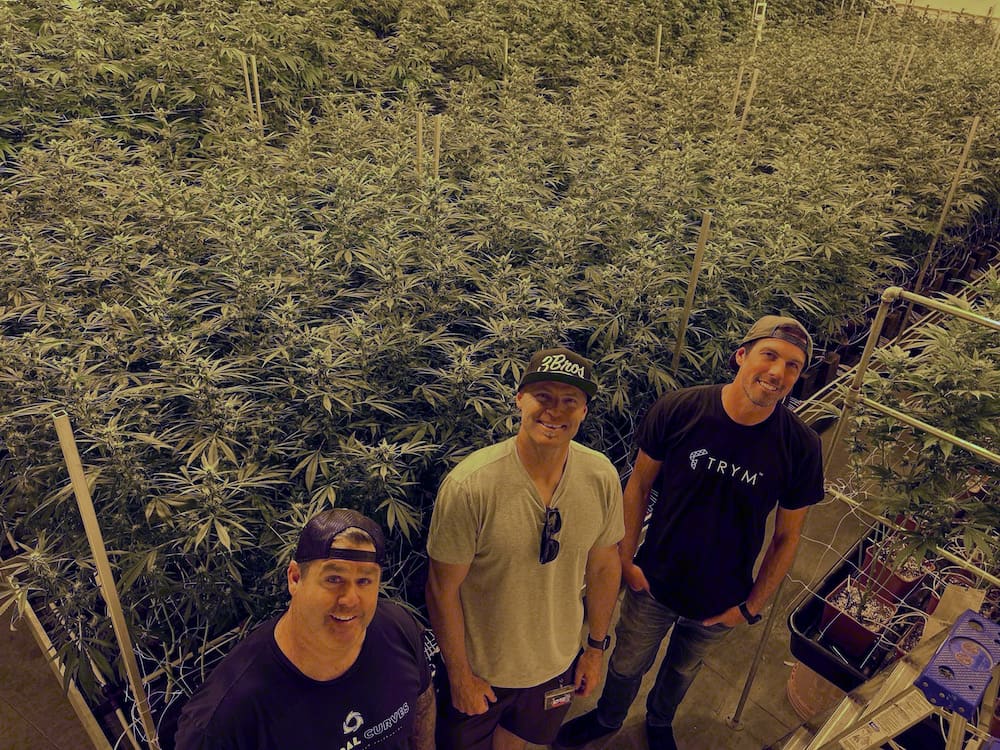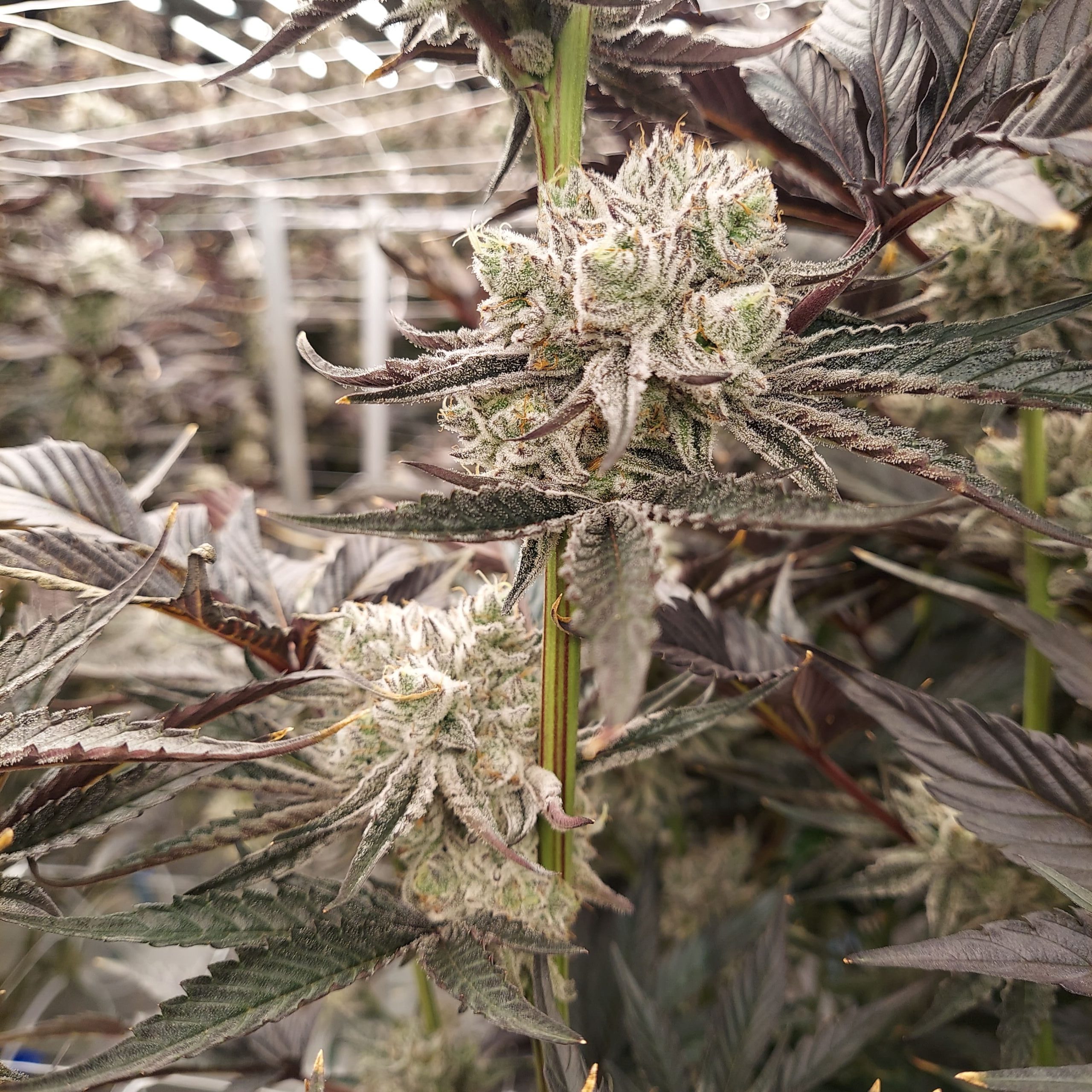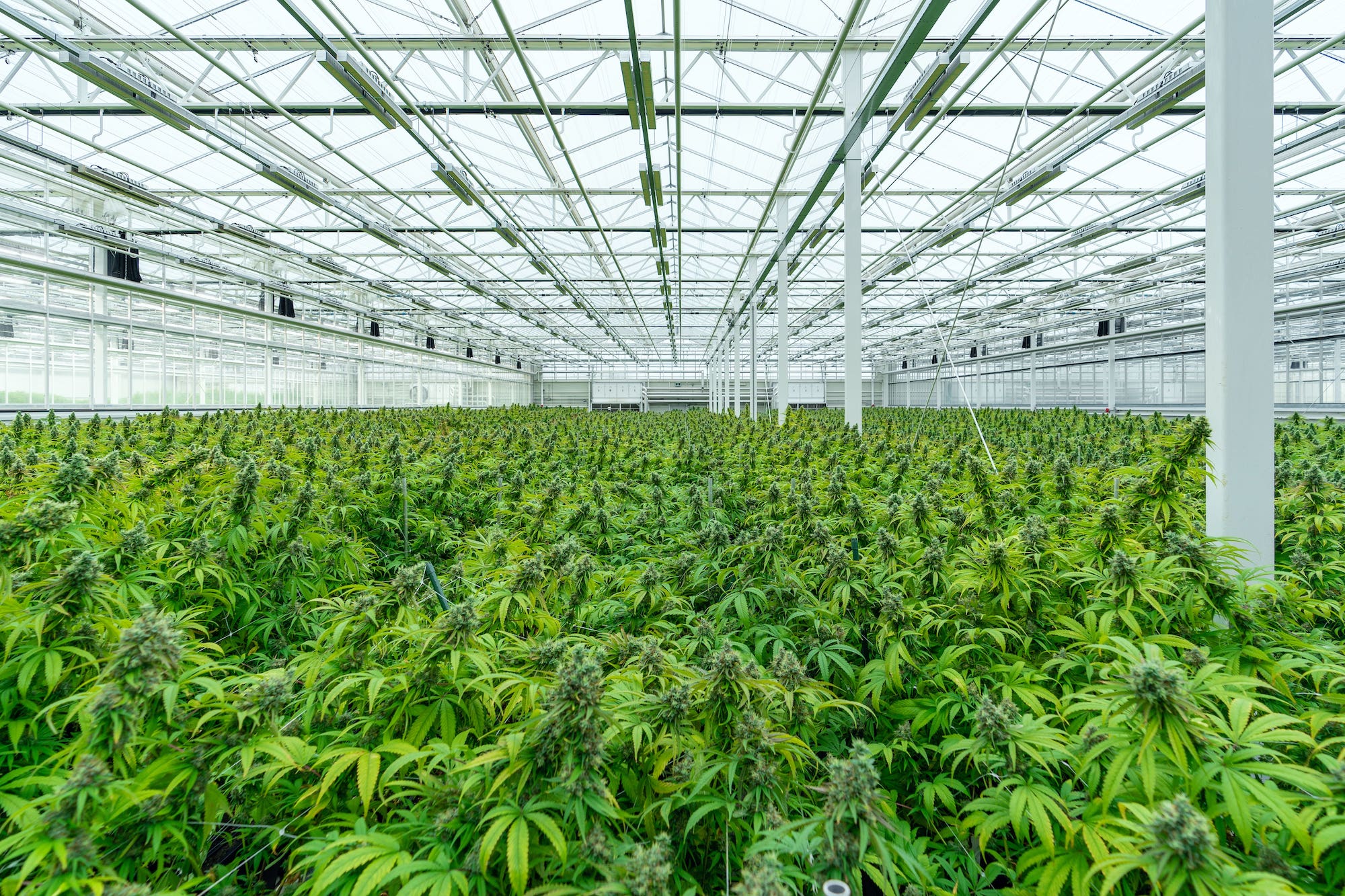Indoor growers know the secret to lush, healthy plants isn’t just a green thumb; it’s also about perfecting the environmental conditions. Perfecting the Vapor Pressure Deficit (VPD) ranges, which change given the growing phase, can help ensure a thriving foundation for cannabis plant production.
The harmony between temperature and humidity plays a pivotal role in plant health and growth, yet it remains an elusive concept to many. This article will delve into the intricacies of VPD and explain how a VPD calculator and VPD chart are useful to indoor growers looking to optimize their environmental conditions.
Indoor cultivation is both an art and a science, and working with VPD ranges is like decoding the language of plants. Read on to learn how to fine-tune your grow rooms with precision and care.
Table of Contents
Understanding Vapor Pressure Deficit (VPD)
Vapor Pressure Deficit (VPD) is a key metric representing the difference between the amount of moisture in the air and how much moisture the air can hold at a certain temperature.
VPD is pivotal in plant cultivation, influencing plant transpiration rates, nutrient uptake, and overall health.
When VPD is within the ideal range, it promotes vigorous plant growth and helps prevent issues such as plant stress, nutrient lockout, nutrient burn, and excess humidity. However, an imbalanced VPD can impair plant functions and growth.
Leaf temperature and air temperature are the two main factors affecting VPD calculation. For example, a lower VPD is favorable during the vegetative stage, while slightly higher VPD levels are often advantageous to encourage optimal environmental conditions during the flowering stage.
A VPD calculator and chart integrate variables such as growth stage, canopy temperature, and air temperature, allowing growers to adjust their grow space conditions accordingly.
Importance of Environmental Conditions for Plant Growth
Environmental conditions like humidity, temperature, and light lie at the heart of plant growth and development. By monitoring and adjusting these variables, growers can optimize their VPD levels and ensure robust, stress-free growth and photosynthesis efficiency.
The measure of VPD enables precise regulation that minimizes the likelihood of pest infestations and combats the potential for mold and mildew, both of which are detrimental to plant health. The grower can ensure that plants maintain optimal transpiration rates and stomata function, making the production yields bountiful. This balanced approach to CO2 uptake, nutrient absorption, and stress management underlines the quintessential role of VPD in fostering a thriving cultivation space.
The Role of Temperature and Humidity
Temperature and humidity are the kingpins of VPD, influencing everything from plant growth to vulnerability to stress and diseases. The VPD reflects the interplay between these two variables, guiding decisions on irrigation, climate control, and moisture management. With optimal VPD values shifting across life stages—from clones to seedlings to vegetative and flowering phases—growers must adjust their settings to suit the developmental needs of their plants.
The Impact of VPD on Plant Health and Growth
VPD dictates transpiration rates and affects CO2 uptake. The careful balance of VPD is a dance that growers must master, harmonizing the forces influencing CO2 absorption, nutritive delivery, and stress management.
In indoor growing environments, conditions can be controlled with precision. VPD is not simply a number; it’s a compass for growers to make informed choices regarding irrigation frequency, climate adjustment, and humidity control—essential decisions that lead to the ultimate success of a grow operation.
The Basics of a VPD Calculator
A VPD calculator is a tool that simplifies the process of determining the VPD in a specific grow environment. It takes into account air temperature, leaf temperature, and relative humidity. By entering these parameters, which are often measured using standard instruments like thermometers and hygrometers, growers can quickly assess the current level of VPD.
The output provided by a VPD calculator enables growers to make immediate decisions about their climate control settings, irrigation timing, and other cultivation processes.
Calculating VPD Levels
VPD is calculated by finding the difference between the saturation vapor pressure—the maximum amount of water vapor that air can hold at a particular temperature—and the actual vapor pressure—how much water vapor is currently in the air. This resulting pressure difference, typically expressed in kilopascals (kPa), allows growers to gauge how favorable the environmental conditions are for plant transpiration and overall health.
How VPD Affects Plant Transpiration and Nutrient Uptake
A high VPD, characteristic of low-humidity air, creates a large gradient between the moisture inside the leaf and the air., encouraging the plant to conserve water by reducing stomatal opening. While beneficial for water conservation, this response can restrict CO2 intake, potentially slowing photosynthesis and growth.
On the other hand, a low VPD indicates a humid environment, reducing the moisture gradient between the leaf and the air. This scenario encourages stomata to remain open, facilitating efficient transpiration and CO2 uptake essential for photosynthesis. Nevertheless, stomata will lose excess water when opened wide or for too long, causing the plant to be dehydrated and stressed. This occurs when the leaf has insufficient water or the root system cannot uptake water as needed.
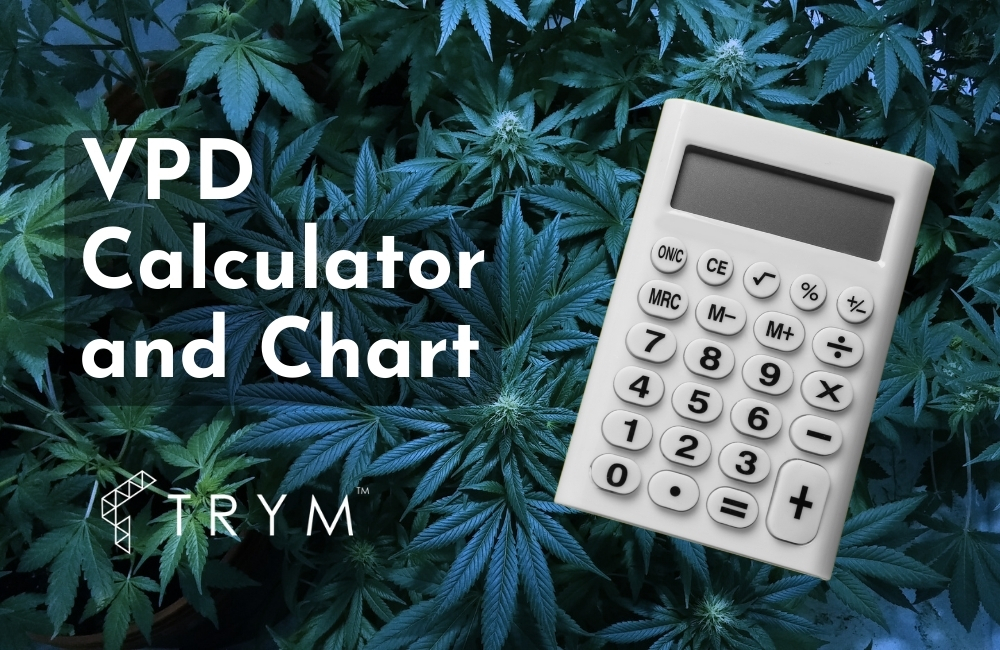
Using a VPD Calculator
VPD calculators have become an indispensable tool for gardeners and farmers who aim to optimize their grow environment, ensuring that plants thrive throughout their growth cycle. By calculating the Vapor Pressure Deficit (VPD), these calculators help determine the ideal temperature and humidity levels necessary for various types of plants. The VPD is the measure of the difference in water vapor pressure within the plant leaves compared to the surrounding air. Managing this deficit is crucial for maintaining plant health, as it directly affects transpiration rates and the overall environment for plant growth.
How to Measure and Input Temperature and Humidity Data
Before using a VPD calculator, it’s important to acquire precise measurements of air temperature and relative humidity inside the grow space. Most VPD calculators require you to input these values to generate a VPD value, expressed in kilopascals (kPa). Here’s a step-by-step approach:
- Use a reliable thermometer to capture the air temperature.
- Obtain the relative humidity (RH) reading using a hygrometer.
- For even more precise data, measure the leaf surface temperature with an infrared thermometer, as this temperature can often differ from air temperature and provides insight into the plant’s actual heat stress level.
- Enter these numbers into the designated fields within the VPD calculator.
- Some calculators also allow for dry- and wet-bulb temperature inputs if direct relative humidity readings are unavailable.
The VPD calculator can accurately assess the current plant environment by carefully inputting the correct values.
Explaining the VPD Calculator Output
Once the temperature and humidity data are entered into the VPD calculator, the output indicates your plants’ current transpiration potential and can be crucial for making necessary adjustments in your grow environment. Here’s what the output signifies:
VPD Value
This is the main output, usually displayed in kilopascals (kPa), showing the current VPD in your grow space. VPD management requires different target values depending on the plant’s growth stage, from seedling to flowering.
VPD Chart Flower, Veg, and Stress
Many calculators provide visual aids like charts or tables with recommended temperature and humidity ranges corresponding to the desirable VPD values during different plant growth stages.
The output from a VPD calculator is not static but requires ongoing monitoring and adjustment to maintain the ideal growth conditions. Online VPD calculators and mobile app options automate these calculations for ease, allowing growers to quickly input changes in temperature and humidity and adapt their management practices accordingly. These insights support maintaining an environment that promotes efficient nutrient uptake, minimizes plant stress, and enhances overall plant health and yield.
There are various reference charts out there. Here’s Dr. Greenhous’s VPD chart featuring Veg, Flower, and Stress stages.

Top 3 VPD Calculators
We’ve rounded up the easiest-to-use calculators, including a VPD reference chart.
- Pulse Google Sheet Calculator – Make a copy and have it accessible anytime, anywhere. Easy enough to use by inputting your variables and checking the included chart.
- Omni Calculator – easy-to-use calculator where you can also set custom ranges to track and analyze your calculations
- VPD Chart + Calculator – a real-time calculator that adjusts to your input and shows your location on the chart so you can identify if you’re in the right spot, given the stage of plant growth. Even has an iOS app for download!
How VPD Changes Can Affect Plants
Vapor Pressure Deficit (VPD) is closely intertwined with plant physiology. It influences key aspects of plant growth and health.
The primary factors affected by VPD are:
- stomatal opening
- CO2 uptake
- transpiration rate
- nutrient absorption at the roots
- overall plant development
As VPD increases, the stomata, which are tiny openings on the leaf surface, begin to contract. This response is a natural mechanism for plants to mitigate water loss. However, it also hampers their ability to engage in efficient gas exchange. As a result, higher VPD levels can actually lead to decreased CO2 uptake due to stomatal closure.
A rising VPD increases plant transpiration rates. The larger the difference in vapor pressure between the leaf and the surrounding air, the more intense the drive for water to escape the leaves through transpiration. This process is not simply about water loss; as plants transpire, they draw more water—and, therefore, nutrients—from the soil. An uptick in VPD can also stimulate the roots to adjust their nutrient uptake, potentially accelerating growth and development.
These examples are why growers monitor VPD so closely. VPD levels that are far off the prescribed range may lead to undue stress on plants, potentially stunting growth and impacting their overall health.
Leaf and Air Temperature in VPD Calculation
A precise VPD calculation considers leaf temperature, air temperature, and relative humidity. The underlying calculation involves subtracting the actual vapor pressure of the air (AVP) from the saturation vapor pressure of the leaf (SVP).
Leaf temperature directly impacts VPD, with warmer leaves holding the capacity for more water vapor, thereby increasing VPD. The intricate relationship between leaf and air temperature underlies VPD’s influential role in plants’ growth, stress levels, and disease susceptibility.
Properly maintaining these temperature parameters and achieving the ideal VPD range of 0.8 to 1.2 kPa, can spell the difference between a thriving garden and one that struggles. Environmental control systems, along with monitoring tools like infrared thermometers, can provide growers with the data they need to optimize temperature and humidity conditions.
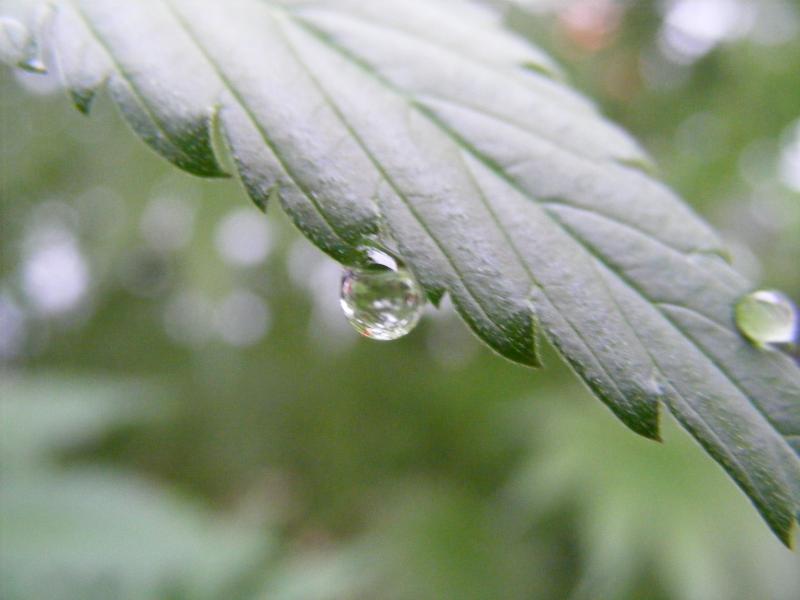
Water Vapor and VPD Relationship
The relationship between water vapor and VPD is another foundational concept necessary to understand VPD calculation fully. Relative humidity reaches 100% when the air’s vapor pressure (AVP) aligns with the current saturation vapor pressure (SVP), meaning the air holds the maximum amount of water vapor possible at that temperature. At this junction, any additional moisture will precipitate out as condensation.
VPD is defined as the disparity between SVP and AVP, indicating the air’s potential capacity to hold additional water vapor. Therefore, VPD not only represents a deficit but also shows how close the environmental conditions are to the point of condensation, which can be detrimental to plant health.
To calculate VPD accurately, it’s essential to determine the SVP using temperature-driven equations and then subtract the AVP based on current air conditions. Mastery of this concept allows growers to fine-tune their environments, creating conditions that favor vigorous plant growth, efficient nutrient absorption, and reduced plant stress.
VPD and the Different Growth Stages of Plants
Understanding the Vapor Pressure Deficit (VPD) needs for each growth stage is a cornerstone of precision agriculture. While the ideal VPD range for overall plant health is typically between 0.8 and 1.2 kilopascals (kPa), it fluctuates based on the stage the plants are in. Growers must also be ready to adapt factors like temperature, humidity, and light intensity to meet the specific VPD demands.
VPD levels are not one-size-fits-all. They vary as plants progress through their life cycle. For instance, a VPD of 1.0 kPa is generally recommended during the vegetative stage, while the flowering stage may call for a higher VPD between 1.2 to 1.5 kPa. Adjusting the environment to maintain these ideal conditions can significantly enhance plant performance and has been shown to increase yields by more than 20%.
| Stage of Growth | Ideal VPD Range |
| Vegetative Stage | 0.8-1.2 kPa |
| Flowering Stage | 1.2-1.5 kPa |
VPD Requirements during the Vegetative Stage
The vegetative stage of plant growth is dynamic and sets the foundation for a successful flowering phase. This period demands a slightly lower VPD, with a range of about 0.8 to 1.2 kPa, to encourage strong and healthy root systems and robust vegetative growth.
For instance, during the cloning or cutting stage, plants thrive at a lower VPD, typically around 0.8 kPa, which coincides with higher humidity levels conducive to root development.
As plants enter the vegetative stage, they benefit from a moderately increased VPD of about 1.0 kPa, which correlates with lower humidity, encouraging more robust and vigorous growth.
Maintaining the correct VPD in the vegetative stage is critical. A higher deficit encourages the plant to transpire more, thus taking up more nutrients from the soil and promoting growth. This phase is all about building mass and structure in preparation for flowering, and the right VPD range is key to achieving this goal.
VPD Requirements during the Flowering Stage
As plants enter the flowering stage, the VPD range shifts to accommodate lower humidity needs. As the plants first transition from veg to flower, 0.8 to 1.2 kPa is favored to support healthy transpiration essential for bud development.
Toward the middle and late flowering periods, the ideal range increases to 1.2 to 1.6 kPa, corresponding to higher transpiration rates and ensuring that the plants can effectively move nutrients where they’re most needed.
The flowering range helps to prevent problems associated with excess humidity, such as mold and mildew, which can devastate a flowering plant. Though these VPD guidelines serve as a general rule, the general, ideal VPD range for most plants lies between 0.8 and 1.2 kPa, with individual strains often requiring tailored environmental settings to fully realize their growth potential.
Adhering to the recommended VPD range will support plant health and productivity and prevent the risks of humidity-related challenges.
Optimizing VPD in Your Grow Space
Maintaining proper VPD levels in your grow space is a delicate balancing act that requires close attention to temperature, humidity, and light intensity. Knowing which variables to adjust and how that affects the other variables makes the difference between a novice and an expert grower.
The Role of Canopy Temperature in VPD Optimization
To truly optimize VPD, having a beat on canopy temperature is essential. Canopy temperature reflects the actual temperature at the plant level, which can differ from ambient air temperature due to factors like evaporation and light absorption. Well-watered plants often have cooler canopies because of evaporative cooling. It’s similar to natural air conditioning.
Shifts in light levels can change the crop’s canopy temperature. The increased light intensity can raise the temperature of the plant’s leaves, potentially increasing the VPD if not counterbalanced by other environmental adjustments. A sound strategy uses a VPD calculator with input from the canopy temperature to accurately gauge the plants’ environment and make informed decisions on optimization.
Furthermore, incorporating the dew point into your strategy can simplify VPD management. By considering the dew point, growers might need to regulate only one parameter—either air temperature or relative humidity—instead of both, easing the complexity of creating ideal VPD levels.
Adjusting Air Temperature for Ideal VPD Levels
Changes in air temperature can significantly affect VPD. Higher temps generally lead to a higher VPD, enhancing plant water uptake and nutrient translocation. On the other hand, a decrease in air temperature can reduce VPD, minimizing risks of excessive transpiration and plant stress.
Elevating temperatures can help increase VPD, which in turn drives the transpiration rate, which is crucial for effective nutrient uptake and cooling of the plant. However, monitoring is essential to avoid escalating temperatures to levels that would stress plants.
Adjusting Humidity for Ideal VPD Levels
Controlling humidity is equally important. Humidifiers that are appropriately sized for your grow space can add moisture to the air, lowering VPD and ensuring plants do not lose water too rapidly. And when you’re looking to drop the humidity, dehumidifiers are indispensable. They can quickly remove moisture from the air, increasing VPD to promote transpiration and nutrient uptake rates without stressing the plants.
Balancing humidity gives growers the ability to finely adjust VPD. Higher humidity decreases VPD, suitable for young or fragile plants that might otherwise transpire excessively under higher VPD conditions. Lowering humidity, on the other hand, aids in increasing VPD, conducive for more mature plants needing enhanced nutrient transport for growth.
Adjusting Light Intensity for Ideal VPD Levels
Light intensity changes also play a role in adjusting VPD. Higher light intensity can elevate leaf temperature, increase VPD, and aid in plant nutrient mobility and metabolic processes. Reducing light intensity will lower the leaf temperature and VPD, which can be beneficial during very early stages or when plants show signs of stress.
Adjusting light intensity moves in tandem with the other environmental factors. Stronger light increases leaf temperature and VPD, which may be productive, especially during the flowering stage. Diminished light reduces the temperature and VPD, which are often needed during propagation or when plants are under stress.
VPD’s critical nature to plant health demands a precise cultivation environment. By utilizing a VPD calculator to inform adjustments, growers can optimize their environments to facilitate plant viability and productivity. This fine-tuning is an investment in plant health and production—achieving higher yields, averting issues such as pest infestations and mold growth, and enhancing overall profitability.

Monitoring VPD with Infrared Thermometers
Luckily, plenty of tools and technology are available to growers to monitor these environmental conditions. Infrared thermometers are indispensable tools for gauging leaf surface temperatures.
The precise measurement provided by these thermometers allows for a more accurate representation of the leaf’s temperature than the ambient air temperature. This distinction is critical; the leaf’s microclimate, influenced largely by the process of transpiration, governs its VPD, which in turn impacts the plant’s ability to efficiently move and utilize water and nutrients.
Benefits of Using Infrared Thermometers for VPD Measurement
When paired with VPD calculators, infrared thermometers utilize temperature alongside humidity data to produce a leaf VPD value. The distinct advantage of having leaf VPD values is the insight they provide into the actual conditions the plant is experiencing, which often differs from the ambient air due to the plant’s transpiration effects on leaf temperature and VPD levels.
Adding further nuance, some VPD calculators apply an offset to rectify the variance between ambient and leaf VPD, underscoring the leaf’s unique microclimate.
By consistently using an infrared thermometer to obtain leaf temperatures, growers can supply data to VPD calculators to derive an enhanced leaf VPD value. This improvement bolsters the process of transpiration, steering the indoor environment towards the golden zone of VPD, thus ensuring optimal plant health.
Proper Techniques for Measuring Canopy Temperature
Measurements should primarily be taken at the plant level, where the temperature impact is most profound on the plants. To capture precise readings, a digital thermometer records canopy height temperature. Additionally, employing a hygrometer at the plant level is essential for precisely evaluating the humidity in that specific micro-environment.
Ensure your canopy has consistent conditions by circulating the air with sufficient fans. Keeping the airflow uniform prevents cold or hot pockets that might skew the readings, guaranteeing that the hygrometer and digital thermometer provide reliable data for accurately managing the VPD.
Maintaining Ideal VPD for Plant Health
The ideal VPD range is not one-size-fits-all; it varies across different cultivars and their respective stages of growth.
Cannabis plants and other fruit-bearing species may require specific VPD conditions during their flowering and fruiting stages to promote better trichome production and effective nutrient translocation.
The Consequences of VPD Imbalances
VPD imbalances can have detrimental effects on plant health. High VPD values can trigger excessive transpiration, leaving plants in a state where they cannot evapotranspirate enough water. This can seriously hinder nutrient transport to the cells, even when stomata are fully open. On the other hand, low VPD values can create a high-humidity environment, preventing plants from efficiently transpiring excess moisture and creating an obstacle to proper nutrient transport.
One way to correct VPD imbalances is by manipulating the environmental temperature — increasing it can enhance saturation vapor pressure, which helps align the water vapor pressures inside and outside the plant. This optimization is essential as it allows the plant to maintain adequate transpiration and nutrient uptake rates. Balancing humidity and temperature is thus a vital part of managing VPD in order to maintain the perfect conditions for plant performance and growth.
Identifying Plant Stress and Nutrient Deficiencies through VPD Monitoring
VPD acts as an indicator of plant stress, with high VPD values often leading to excessive transpiration, resulting in stress on the plant. Continuous monitoring of VPD enables growers to make informed decisions regarding irrigation frequency and the use of heating, cooling, or dehumidifying systems to effectively manage plant stress and combat diseases.
Understanding the correct VPD “sweet spot” is critical for each plant’s growth stage, as it allows growers to optimize nutrient uptake and minimize the potential for plant stress. Identifying issues like mold, mildew, stunted growth associated with low VPD or dehydration, and nutrient deficiencies linked to high VPD is possible through regular VPD observation. For indoor growers especially, monitoring VPD levels is key to maintaining a healthy environment that encourages robust plant growth.


